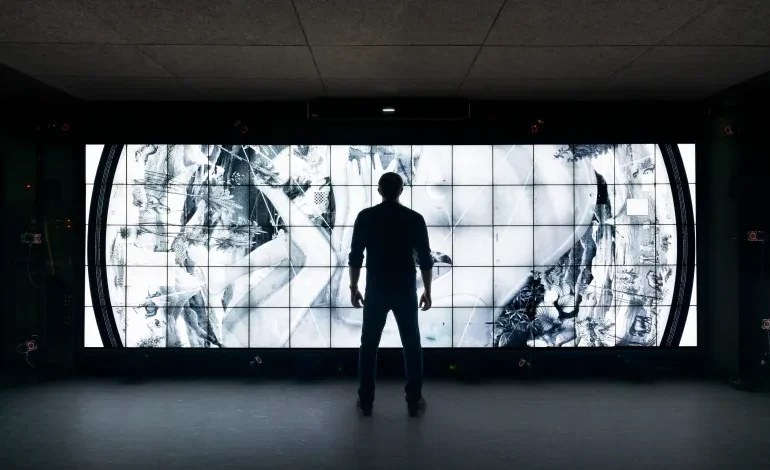Leaving a permanent record of humanity on the moon – in 100 billion pixels

With a population of just over 5,000, the French village of Nuit-Saint-Georges may be small, but this pastoral Burgundy hamlet has an oversized connection to the moon.
It is the birthplace of famed 19th-century astronomer Felix Tisserand, whose name was given to the Tisserand crater located in a vast lunar plain known as the Sea of Serenity. He was the contemporary of French novelist Jules Verne, author of From the Earth to the Moon – the first book to imagine such a journey – in which its characters celebrate their arrival with a bottle of wine from Nuit-Saint-Georges.
Then, a century later, when the astronauts of Apollo 15 passed through the village, they were gifted a wine called Cuvee Terre Lune – Lunar Earth Vintage – which inspired them to name yet another crater after the town. Today the square in front of the city hall is called Place du Cratere Saint-Georges – Saint George Crater Plaza.
This is an enduring trend, as a new project will forge yet another link not only from village to moon, but from humanity to our own hereafter.Sanctuary on the Moon is a new international effort to establish a lunar time capsule that will offer its finder a detailed guide to our present civilisation. Set to launch moonward in just a few years with the support of NASA, UNESCO and French President Emmanuel Macron’s administration (no guarantee has been given about the support of any future administration, however), the project was founded by Benoit Faiveley – who happens to hail from Nuit-Saint-Georges.
The golden record
The inspiration for Sanctuary on the Moon came from a similar endeavour nearly 50 years ago: the Golden Records that were affixed to the two Voyager spacecraft.
Launched by NASA in 1977, these probes were sent to explore and send back photos of the outer planets before continuing beyond the solar system, where they will drift for millions or perhaps even billions of years unless something finds them or gets in their way. It was for the unlikely event of the former – that some extraterrestrial intelligence might chance upon the crafts – that the Golden Records were included on board.
The brainchild of renowned astronomer Carl Sagan, the Golden Records contain sounds and images intended to provide a broad glimpse of life and culture on Earth. Images include DNA, human anatomy, animals and insects, plants and landscapes, food and architecture, and other aspects of the biosphere and civilisation. The music curation spans Bach to Beethoven, folk music to Chuck Berry, and the sounds of humpback whales to brain waves of a person thinking about a range of topics, including the sensation of falling in love.
What it does not include, despite a common misconception: the Beatles track, Here Comes the Sun. According to Sagan’s 1978 book, Murmurs of Earth, which recounts the creation of the discs, permission to use the song was rejected by the record company, EMI. One can only conclude that EMI must have been worried that aliens would rip off the Beatles.










